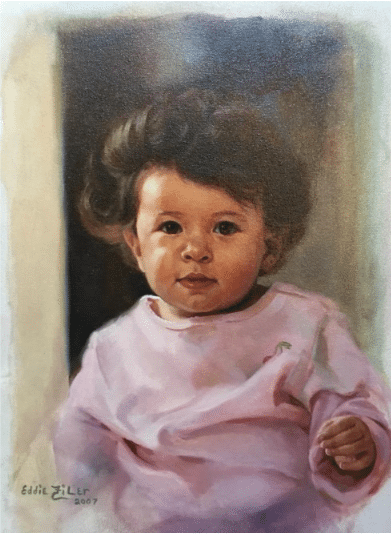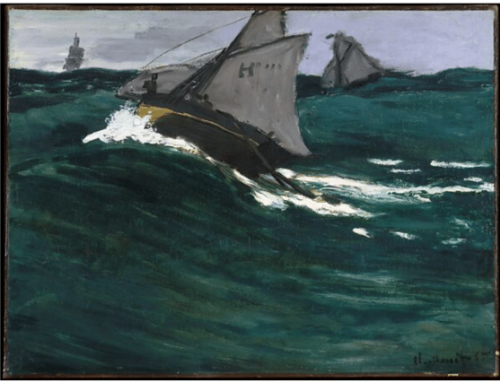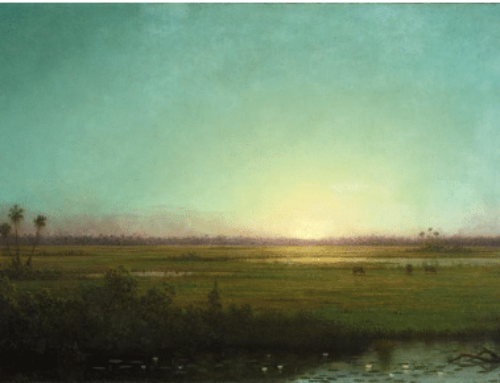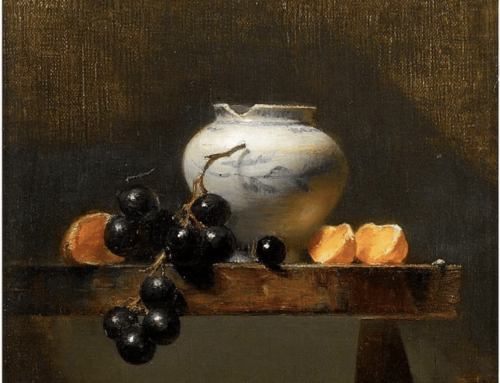- THINK AGAIN
The late Canadian landscapist Robert Genn suggested that, “rather than go with your first choice in a composition, go with your second choice.” Why? I think it’s partly because our first choice is often the safest, because it’s one we’ve seen before. Painting from the hip is a challenge, so it’s no wonder we tend to summon up every bit of what we know works before we even begin.
But the first composition that “comes to you” is probably one you’ve received from paintings you’ve studied and liked. “It’s likely to be in your comfort zone, but it is your second choice that will stretch your capabilities and expose new creativity. How to do this?” Genn suggests the following: “Slowly rotate yourself in a full circle, taking every possibility into consideration. Sort out and at least anticipate the potentials of every angle before you start.”
Sometimes it’ll just click. Something jumps out at you and suddenly you can imagine the the general outline of the finished piece, even though you have no idea how to even start – and that’s your painting.
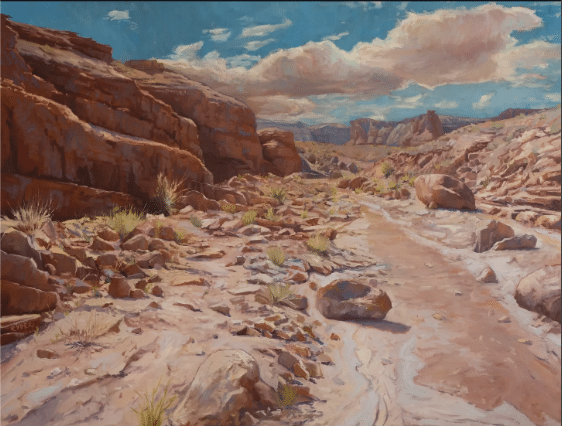
Matt Ryder, Blazing Trail, oil, 36” x 47” Matt teaches his methods in his video Painting Rocks and Sunlight.
- LISTEN TO THE PAINT Maintain a dialogue with your painting. After every few strokes, consider what’s just happened and instead of worrying about how to fix it, ask what it suggests about what might happen next. React imaginatively – to your subject, but also to each new relationship of color and brushwork that you create. Everything you do changes the equation; the sooner you notice how it’s adding up, the better you’ll feel at the end.
Oil paintings are infinitely changeable, and creativity ultimately mysterious – but if you can stop insisting that it it’s your way or the highway, your painting may just start leading you where you really want to go (whether you know it or not).
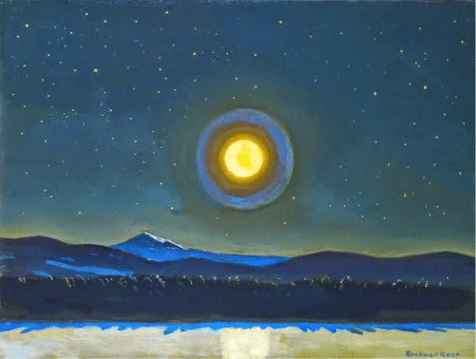
Rockwell Kent, Moonlight in the Adirondacks.
- Sit at the feet of masters. Not literally; I mean find the paintings that humble and excite you, that make your head explode, that make you say “Yes – THAT’S painting.” Don’t copy them – instead, see if you can isolate the specific qualities in them that you’re responding to. They don’t have to be by dead people (though some of them probably should be). Just let yourself be blown away by what an artist you’ve encountered has achieved.
Why do this? Because your feeling for art in general will invest your own paintings with feeling in subtle but highly important ways.
This isn’t about asking, “how?” Just feel it. Take it in. Look long. “Listen” to the painting, in part and in whole. See what someone has done, intuit their dialogue with the work and the decisions they made (and more importantly, rejected). Give yourself permission to look not just with your eyes but with your emotions, take a deep breath, and remember how it makes you feel. Implicitly understand the “why” – the only answer to which you need to know is: “Because Damn – that’s PAINTING.”
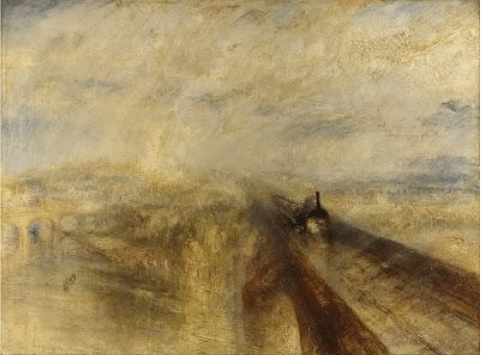
JMW Turner, Rain, Steam, and Speed, the Great Western Railway, 1844
Keven MacPherson to Judge July Salon
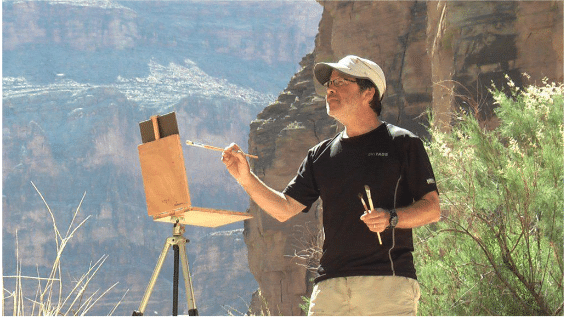
The PleinAir Salon Art Competition was created by PleinAir magazine publisher Eric Rhoads, and we are celebrating our 13th year. In the spirit of the French Salon created by the Academie des Beaux-Arts in Paris, this annual online competition, with 12 monthly cycles, leading to the annual PleinAir Salon Art Competition, is designed to stimulate artistic growth through competition. The competition rewards artists with $50,000 in all cash prizes each year, and exposure of their work, with the winning painting featured on the cover of PleinAirmagazine.
Winners in each monthly competition receive recognition and exposure through PleinAir magazine’s print magazine, e-newsletters, websites, and social media. Winners of each competition will also be entered into the annual competition. The 13th Annual Awards will be presented live at the Plein Air Convention & Expo in May 2024, where the winner will be presented with a $15,000 check.

